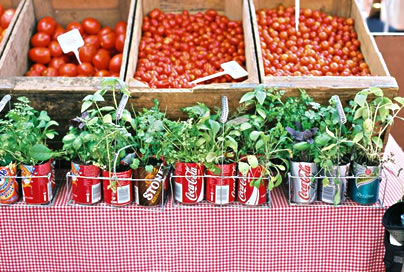News
Hurry up and take it slow
Wednesday, June 2nd, 2010
Theres something magical about a Saturday-morning produce market. Like Christmas served up in weekly, bite-sized increments, theres the giddy feeling of anticipation (as in, What wonderful farm-fresh veggies am I going to load into my bag this time around?), the element of surprise (Ooh! Tulips!), the convivial atmosphere, seeing old faces, embracing new, and the inevitable, but divine, overindulgence.
Visiting the Stellenbosch Fresh Goods Market this feel-good fix is made all the better upon finding out that this open-air emporium has a heart as big as its fan base. To be less oblique, this market ascribes to the principles of the international Slow Food organisation.
Slow Food started in 1986 as a revolt led by Italian Carlo Petrini against fast-food giant McDonalds when it wanted to plonk a pair of golden arches near Romes Spanish Steps. Today, its a 100 000-member-strong organisation, with chapters in over 132 countries.
As I chat to Dr Gail Blake, a medical doctor and originator of the Stellenbosch Fresh Goods Market and the Willowbridge Slow Market, I find out that Slow Food is about much more than preparing meals according to age-old, unhurried methods.
The point of Slow Food is to have a short distribution chain, so that you know what youre buying and where it comes from, she explains. In mainstream retail the process isnt transparent, and the only information you have about your product is written on the label. And we all know labels are terribly deficient.
This general oblivion about what we’re putting into our bodies is exactly what compelled Gail to start these markets. As a doctor I became very concerned about the state of food due to the rise in chronic diseases such as obesity, diabetes and heart disease in my patients, she says. We all tend to think of fast food as something you get at your local franchise, and not as something that was produced, cleaned, packaged and stored at factories.
People often dont know that meat coming from feed lots is washed in chlorine to rid it of contaminants, or that 80% of the worlds antibiotics go to feed lot cattle, continues Gail. Hormones given to cattle and poultry to make them mature faster have been proven to cause a range of conditions, including infertility, while seawater and freshwater fish are effected by factory effluent running into groundwater and rivers.
So how exactly does one side step the bad stuff? According to Gail, its all about maintaining the strict good, clean and fair criteria set up by Slow Food International. We screen all suppliers to check whether their produce is seasonal, local and fresh, and to see what their farming practices are like, she explains. As a rule, we dont sell produce sourced from more than 40km away. This also contributes to the local economy, because people are putting their money directly back into their own communities.”
When I ask Gail to name some of her favourite producers, it becomes clear that she sees far less of the inside of her local supermarket than most. I always buy chicken from a small farmer who raises her chickens on greens, slaughters them on Fridays and brings them to the market on Saturday mornings, she says. The difference in taste is just unbelievable. I get my beef from another female farmer in Wellington, who raises grass-fed Angus cattle that are slaughtered on the farm, while all of my veggies come from a consortium of local farm workers who cultivate them on their farmers land.
Speaking of all things local, another Slow Food characteristic thats quite evident at the Stellenbosch Fresh Goods Market is the celebration of cultural food heritage. Tucking into a bacon-and-egg sarmie (free-range on artisanal bread, of course) and strolling through the stalls, I spy a Tunisian boy deep-frying falafels, while his dad stuffs them into already overflowing schwarmas, an Indian lady dishing out delicious looking portions of butter chicken, and an Italian man cutting up his just-baked thin-based pizzas for an eager queue.
Discarding my wrapper in one of the many recycling bins dotting the periphery, I follow my nose to what Id been craving all morning: a good old cinnamon pancake made by an authentic Afrikaans tannie.
By Annette Klinger








